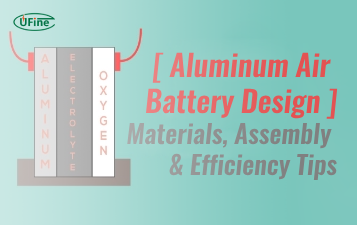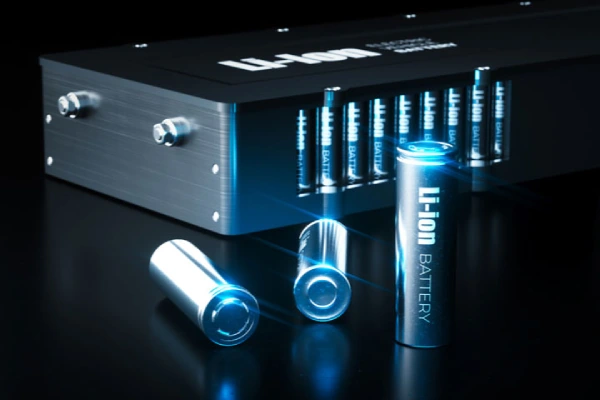Welcome to our comprehensive guide on the uses of batteries! It is important for consumers, industry professionals, and policymakers to understand the various problems and solutions encountered during battery use. In this article, we aim to address 15 FAQs about the uses of batteries. This guide is designed to provide valuable information to enrich your understanding of the uses of batteries.
1. Uses of battery: Why does the cell have zero or low voltage?
-
- The battery is externally short-circuited or overcharged or reverse charged (forced over-discharge);
- The battery is continuously overcharged by a high rate and large current, causing the battery pole core to expand. The battery may have zero or low voltage due to a short circuit caused by direct contact between the positive and negative electrodes.
- There is an internal short circuit or micro short circuit in the battery, such as improper placement of the positive and negative electrodes, resulting in a short circuit in contact between the electrodes, or contact between the positive and negative electrodes, etc.
2. Uses of battery: Why does the battery pack have zero voltage or low voltage?
-
-
-
- A single battery cell has zero voltage;
- The battery pack plug is short-circuited or broken, or the connection with the plug is unsuccessful;
- The battery pack leads and the battery are desoldered or weakly welded;
- The internal connection of the battery pack is incorrect. Missing soldering, weak soldering, desoldering, etc., between the battery connecting piece and the battery;
- The internal electronic components of the battery pack are incorrectly connected and damaged.
-
-
3. Uses of battery: How to prevent battery overcharging?
To prevent the battery from overcharging, the charging endpoint needs to be controlled. When the battery is fully charged, some special information is available to determine whether the charge has reached the endpoint.
There are generally six methods to prevent the battery from being overcharged.
-
-
-
- Peak voltage control: Determine the end of charging by detecting the peak voltage of the battery;
- dT/dt control: determine the end point of charging by detecting the battery peak temperature change rate;
- △T control: When the battery is fully charged, the difference between the temperature and the ambient temperature will reach the maximum;
- – △V control: When the battery is fully charged and reaches a peak voltage, the voltage will drop by a certain value;05) Timing control: Control the charging endpoint by setting a certain time. Generally, it is controlled by setting the time required to charge 130% of the nominal capacity;
-
-
4. Uses of battery: Why can’t the battery or battery pack be charged?
There may be several reasons why the battery cannot be charged:
-
-
-
- The battery has zero voltage, or there is a zero-voltage battery in the battery pack;
- Battery pack connection error. The internal electronic components and protection circuit of the battery are abnormal;
- The charging equipment is faulty, and there is no output current;
- External factors cause the battery charging efficiency to be too low (such as extremely low or high temperature).
-
-
5. Uses of battery: Why can’t batteries and battery packs be discharged?
There may be several reasons why the battery cannot be discharged:
-
-
-
- After storage and use, the battery life decreases;
- The battery is insufficiently charged or not charged;
- The ambient temperature is too low;
- Battery discharge efficiency is low. For example, when discharging a large current, ordinary batteries cannot discharge electricity because the diffusion speed of internal substances cannot keep up with the reaction speed, causing the voltage to drop sharply.
-
-
6. Uses of battery: Why do batteries and battery packs have short discharge times?
-
-
-
- The battery is not fully charged, such as insufficient charging time, low charging efficiency, etc.;
- The discharge current is too large, which reduces the discharge efficiency and shortens the discharge time;
- When the battery is discharging, the ambient temperature is too low, and the discharge efficiency decreases;
-
-
7. What is battery overcharging?
Overcharging refers to continuing to charge the battery after it has been fully charged through a certain charging process.
Since the capacity of the negative electrode is higher than the capacity of the positive electrode when the battery is designed, the oxygen produced by the positive electrode passes through the separator paper. It combines with the hydrogen produced by the negative electrode. Therefore, under normal circumstances, the battery’s internal pressure will not increase significantly. However, suppose the charging current is too large or the charging time is too long. In that case, the generated oxygen will not have time to be consumed, which may cause the internal pressure to rise. This may lead to battery bulge, leakage, and other undesirable phenomena. At the same time, battery performance will also be significantly reduced.
8. What is battery over-discharge?
After the battery has discharged the internally stored power and the voltage reaches a certain value, continuing to discharge will cause over-discharge. The discharge cut-off voltage is usually determined based on the discharge current. 0.2C-2C discharge is generally set to 1.0V, and discharge above 3C such as 5C or 10C is set to 0.8V.
Over-discharging a battery can have catastrophic consequences for the battery. Especially large current over-discharge or repeated over-discharge will have a greater impact on the battery. Generally speaking, over-discharge will increase the battery’s internal pressure and destroy the reversibility of the positive and negative active materials. Even if charged, it can only be partially restored, and the battery capacity will be significantly reduced.
9. Uses of battery: Why does the battery expand when charging?
-
-
-
- Bad battery protection circuit;
- The battery has no protection function, and the cell expands;
- The charger has poor performance, and excessive charging current causes the battery to swell;
- A high rate and large current continuously overcharge the battery;
- The battery is forced to over-discharge;
- Issues with the design of the battery itself.
-
-
10. What is battery explosion? How to prevent it?
If any part of the solid matter in the battery is instantly discharged and pushed to a distance of more than 25cm from the battery, it is called a battery explosion.
General methods to prevent battery explosion include:
-
-
-
- No overcharging or short circuit;
- Use better charging equipment for charging
- The battery vents must always be kept open
- Pay attention to heat dissipation when using the battery;
- Mixing different types of old and new batteries is prohibited.
-
-
11. Why do camera batteries need to be kept warm in winter?
Because the battery in a digital camera becomes less active when the temperature is too low, it may not be able to provide the normal operating current of the camera. Therefore, special attention should be paid to keeping the camera or battery warm when shooting outdoors in areas with lower temperatures.
12. Can batteries of different capacities be combined?
If batteries of different capacities or old and new batteries are mixed, leakage, zero voltage, etc. may occur. This is due to the difference in battery capacity during the charging process, which causes some batteries to be overcharged and some batteries to be undercharged. When discharging, batteries with high capacity are not fully discharged, while batteries with low capacity are over-discharged. In such a vicious cycle, the battery is damaged and leaks or has low (zero) voltage.
13. How is the battery best stored? Do batteries need to be fully charged for long-term storage?
According to IEC standards, batteries should be stored at a temperature of 20℃±5℃ and a humidity of (65±20)%. Generally speaking, the higher the battery storage temperature, the lower the remaining capacity, and vice versa. The best place to store batteries is when the refrigerator temperature is between 0℃ and 10℃, especially for primary batteries. Even if the secondary battery loses capacity after storage, it can be restored as long as it is recharged and discharged several times.
Theoretically, there is always energy loss when a battery is stored. The inherent electrochemical structure of the battery itself determines that battery capacity will inevitably be lost. This is mainly due to the battery being self-discharged. Usually, the battery self-discharge is related to the solubility of the cathode material in the electrolyte and its instability after heating (easy to self-decompose). Rechargeable batteries have a much higher self-discharge than primary batteries.
Suppose you want to store the battery for a long time. In that case, it is best to keep it in a dry and low-temperature environment and keep the remaining battery power at about 40%. Of course, it is best to take out the battery and use it once a month to ensure that it is in good condition and not to cause complete loss of power and damage to the battery.
14. Should the battery be taken out after use?
Suppose the electrical equipment will not be used for a long period of time. In that case, it is best to remove the battery and place it in a low-temperature and dry place. If not, even if the power-consuming device is turned off, the system will still have a low current output from the battery, which will shorten the battery life.
15. Can any charger be used for rechargeable portable batteries?
No, because any charger only corresponds to a specific charging and electrochemical processes. Lithium-ion, lead-acid, and Ni-MH batteries have different voltage characteristics and charging modes. Only specially developed fast chargers can achieve optimal charging results for Ni-MH batteries. Slow chargers can be used in an emergency but require more time.
It should be noted that although some chargers have a certification label, special care should be taken when using them as chargers for batteries with different electrochemical systems. The conformity label simply indicates that the device complies with European electrochemical standards or other national standards. This label does not give any information about the type of battery it is suitable for. Using a cheap charger to charge Ni-MH batteries is dangerous and will not give satisfactory results. The same should be noted for other types of battery chargers.
16. Summary
In conclusion, this article has delved into the multifaceted uses of battery by addressing 15 frequently asked questions across different domains. The causes and solutions to various charging, discharging, swelling, and other problems encountered when batteries are used are discussed.
Whether it’s powering our devices on the go or contributing to the transition toward a greener future, the uses of battery technology continue to shape how we live, work, and interact with the world around us.
Related Tags:
More Articles

Aluminum Air Battery Design: Materials, Assembly & Efficiency Tips
An aluminum air battery uses aluminum and air to generate power. Learn its materials, assembly steps, and tips to boost energy output and efficiency.
7 Advantages of a Heated Lithium Battery in Cold Climates
Looking to power batteries in freezing temps? Heated lithium batteries excel in cold climates. Here are 7 key benefits and how they work.
How to Choose the Best Floor Scrubber Battery for Commercial Cleaning?
Selecting the ideal floor scrubber battery ensures a long runtime, rapid charging, and minimal maintenance for efficient commercial cleaning operations.
Battery for Blower vs Battery for Leaf Vacuum: Which One Should You Choose?
Battery for blower vs leaf vacuum—learn the key differences in power, fit, and runtime to choose the right battery for your outdoor tool needs.
How to Choose the Right Battery for Blower?
Choosing the right blower battery? Consider voltage, capacity, chemistry & usage. This guide helps match the best battery for peak performance.




